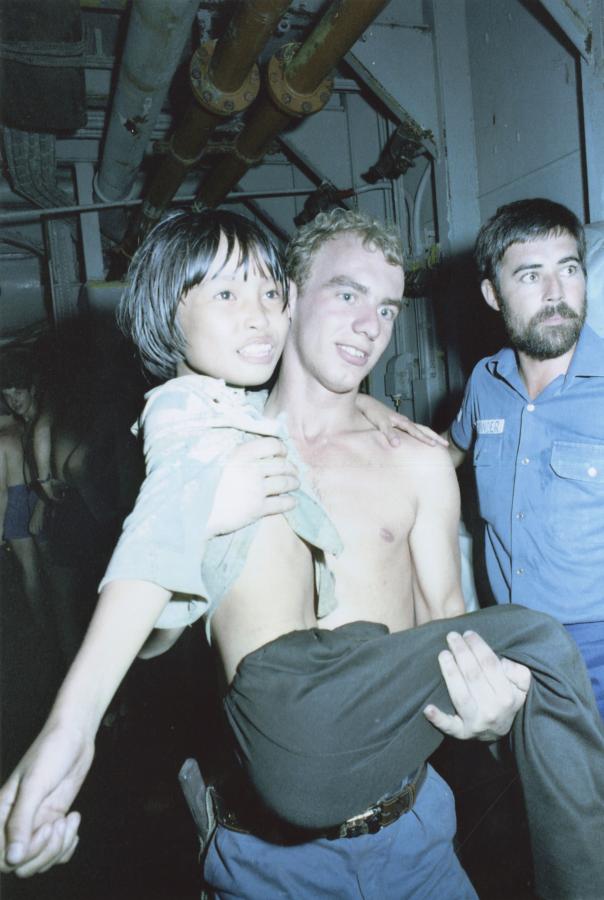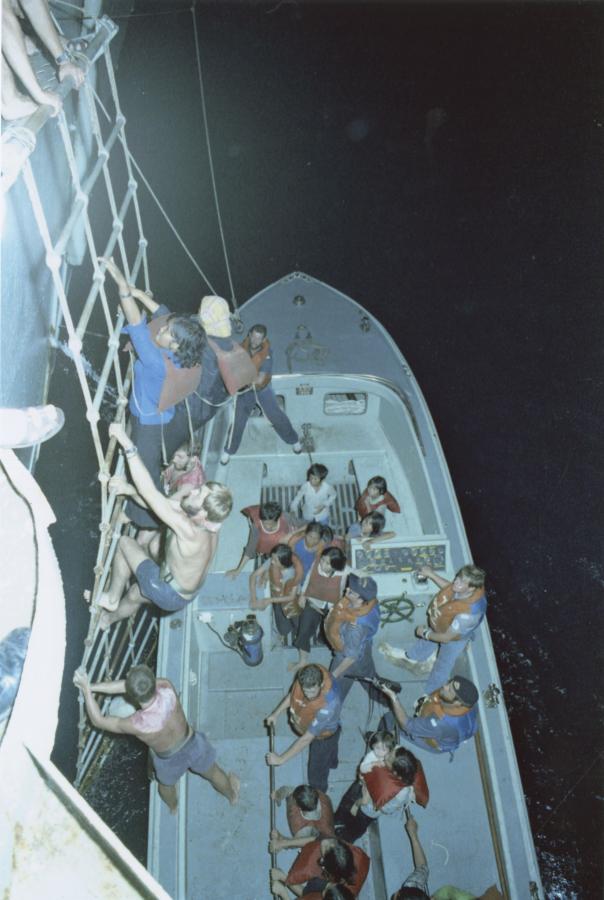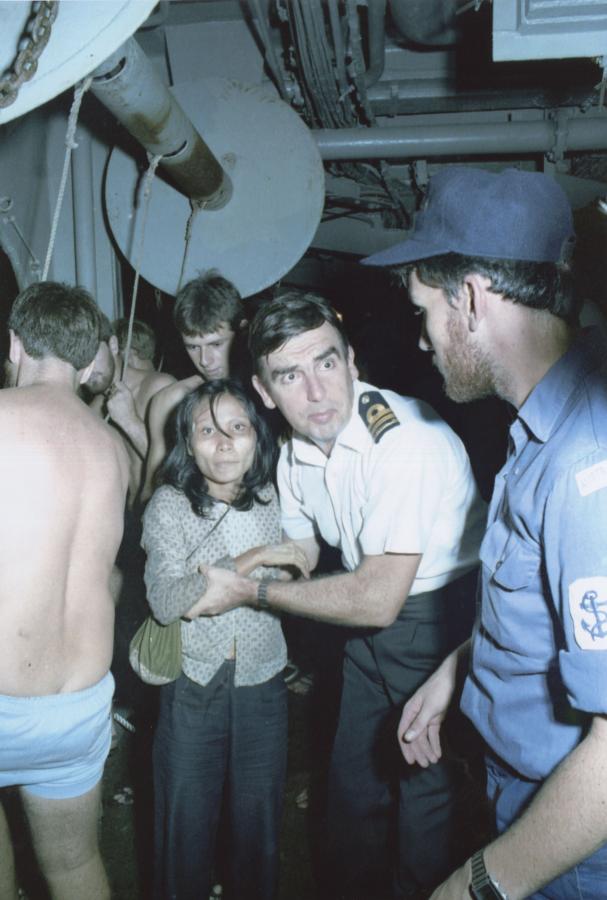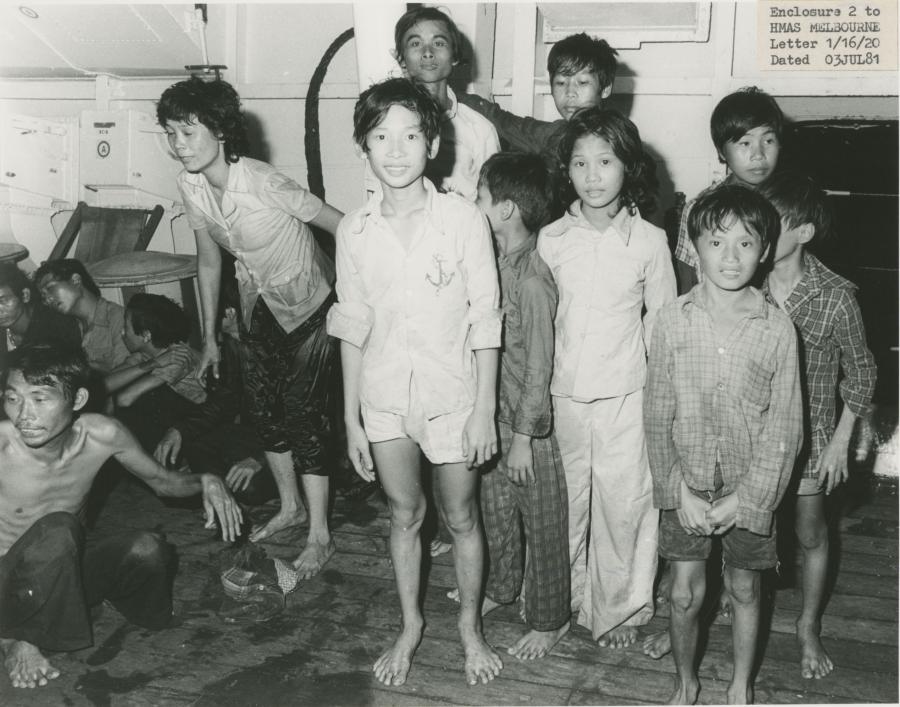Crossed over the ocean for freedom
HMAS Melbourne after a refit in 1968-69 with Douglas A4G Skyhawk fighters aft and a Grumman S-2E Trackers anti-submarine aircraft forward.
HMAS Melbourne (R21), the Royal Australian Navy’s Majestic-class light aircraft carrier, played an important role in the Australian government’s forward defence policies. As part of Australia’s commitment to the British Commonwealth Far East Strategic Reserve (BCFESR) and South East Asia Treaty Organisation (SEATO), Melbourne spent considerable time in south-east Asian waters. The carrier provided support during the Malaysia–Indonesia Confrontation and took part in ‘show of force’ exercises off the Malaysian coast. In 1965 and 1966 Melbourne escorted her sister ship HMAS Sydney, which had been recommissioned as a fast troop transport, to Vietnamese waters.

Image courtesy of Sea Power Centre
Dr Blake Singley’s article highlights the history of HMAS Melbourne during this time, but the main focus of the article is a dramatic night rescue of Vietnamese refugees which took place in June 1981.

Image courtesy of Sea Power Centre
With the fall of the Republic of Vietnam in late April 1975, an exodus of Vietnamese people began, predominantly in boats of all shapes, sizes and sea-worthiness, which led to a humanitarian crisis. Some 2 million Vietnamese fled their country by any means possible between 1975 and 1994. Some 800,000 people were recorded as arriving safely by boat in foreign countries, but thousands would never make it, falling prey to pirates, disease, over-crowded boats and storms.

Image courtesy of Sea Power Centre
The Vietnamese refugees rescued by the crew of Melbourne had been in danger of being lost at sea; their boat’s engine had failed on the second day of the voyage and the boat had begun taking on water. Those on board had tried to signal passing ships for help, but to no avail. The refugees began to resign themselves to their fate, but despair turned to joy when the Royal Australian Navy arrived.
A number of photographs were taken of the refugees during and after the rescue: the relief on many faces is hard to ignore. A Royal Australian Navy Public Relations photographer also happened to be on board Melbourne at the time, and a number of colour images were taken of the refugees. These have been reproduced below with the kind permission of the Royal Australian Navy.

Image courtesy of Sea Power Centre
To read Blake Singley’s article, purchase a copy of Wartime 89 here.
Further highly recommended reading and viewing can be found in the links below:
